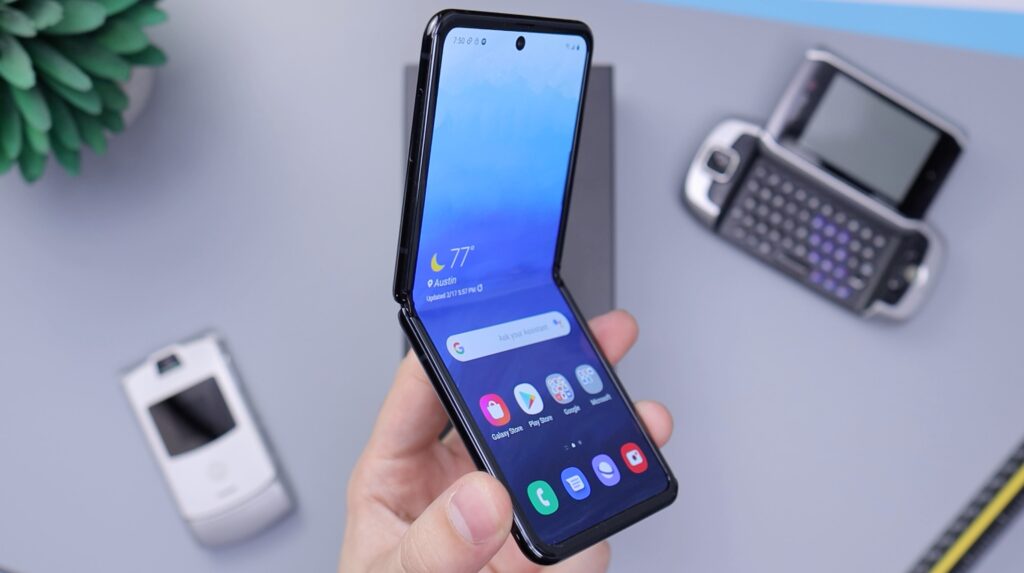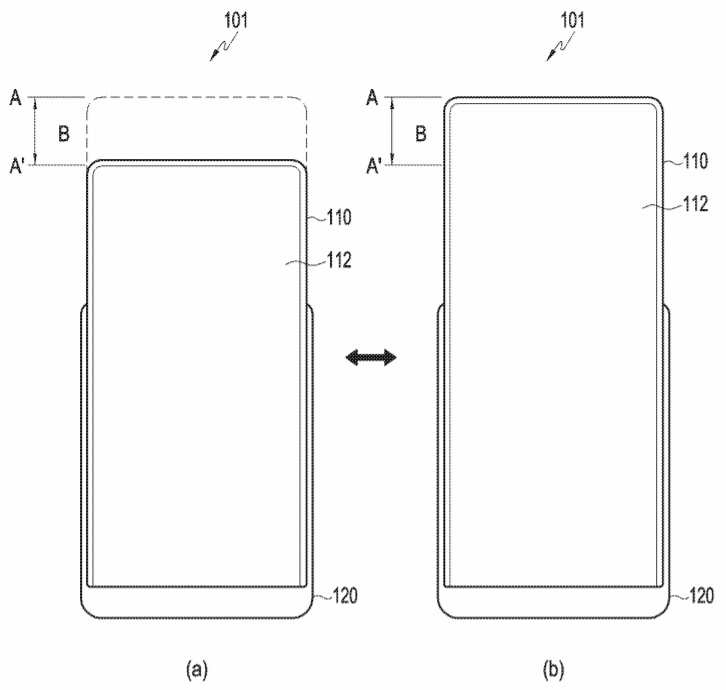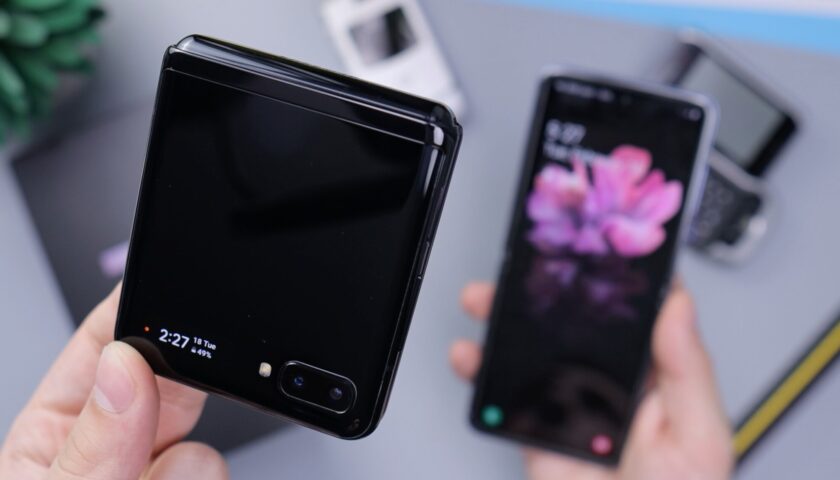A mobile phone has become our lifeline. We use it to consume multimedia content like audio and video, capture pictures and videos, play games, perform financial transactions, communicate with others, etc. Wouldn’t it be great if the screen size of these devices changes according to the task being performed on them? For example, a bigger screen during gaming and media consumption for an immersive experience, while a compact screen during calls, capturing pictures, and carrying phones in our pockets.

This is only achievable if mobile phones have flexible displays. Foldable phones are one of the many implementations of flexible displays. However, they have several drawbacks, one of which is the crease around the folding area. The crease problem can be solved if the flexible display is scrollable instead of foldable.

The patent application (US20190384438A1) filed by Samsung Electronics implements a flexible display in a scrollable manner. The invention describes that the structure can be configured to change the screen of an electronic device to an open and closed state, and hence the screen size varies accordingly to these states. The invention discloses an electronic device including a flexible display, some area of the flexible display is arranged on the front surface. In addition, some area of the display is extended to the rear surfaces of the electronic device to form a curved portion so that when the device is in an open state, the display is stretched out from the rear surface between the first and second (open and closed) forms of the electronic device. In contrast, in the closed state, this screen rolls back to its rearward position.

